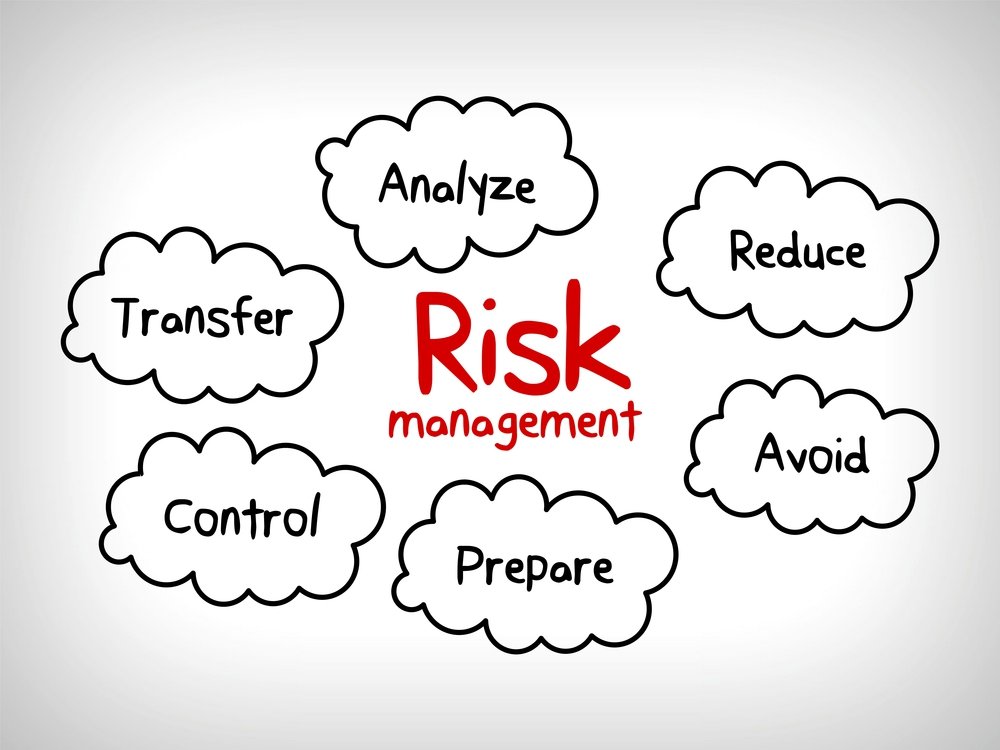Addressing the Hidden Risks: The Importance of Risk Management in Technology
Addressing the Hidden Risks: The Importance of Risk Management in Technology
Blog Article
The Vital Value of Risk Management in Getting Business Goals
In the rapidly advancing company landscape, the capacity to navigate uncertainty has actually become an important. This is where Risk Management steps in, supplying a structured method to recognizing, evaluating, and mitigating prospective roadblocks to proceed. It's more than just a safety measure - it's a tactical device, fostering strength and development. As we explore the critical duty of Risk Management in accomplishing organizational objectives, one can't ask yourself yet aid: just how does this convert into real-world success?
Comprehending the Idea of Risk Management in Service

The Essential Role of Risk Management in Strategic Planning
Integrating Risk Management right into calculated planning acts as a guard for organizations, anchoring their long-term plans with a solid structure of preparedness and strength. It operates as the company's radar, identifying prospective risks and susceptabilities that can interfere with the path towards attaining their stated goals. Risk Management provides a structure for expecting unpredictabilities and devising suitable reactions, making sure the company's survival and success also despite difficulty. By incorporating Risk Management right into strategic preparation, organizations can transform these uncertainties into chances for development and technology. This tactical interweaving of Risk Management promotes adaptability, making organizations a lot more durable and allowing them to browse the ever-changing business landscape confidently. As a result, Risk Management ends up being an indispensable tool in tactical planning, crucial in safeguarding lasting success.

Methods for Identifying, Assessing, and Focusing On Dangers
The process starts with Risk recognition, employing devices such as SWOT evaluation, which helps in determining prospective risks and possibilities. Next, Risk analysis is performed to identify the possible impact and likelihood of each Risk. Threats are focused on based on their possible influence and chance, permitting companies to concentrate their sources on high-priority dangers.
Protecting Organizational Workflow Through Effective Risk Management
In the company landscape filled with uncertainties, effective Risk Management plays a pivotal role in safeguarding business procedures. It functions as a protective shield, reducing the unfavorable impacts of potential threats and making certain the smooth performance of all processes. By recognizing and assessing prospective risks, Risk Management enables companies to develop robust backup plans. This preventive approach aids in maintaining operational stability, even when challenged with unanticipated scenarios. In essence, Risk Management is the lifeline that maintains the organizational procedures afloat amidst rough waters. It guarantees not only the survival yet the sustainable growth of an organization, making it an indispensable device in attaining company goals. For this reason, companies need to buy thorough Risk Management techniques to safeguard their procedures.

Transforming Possible Hazards to Opportunities: The Power of Risk Management
While possible dangers might at first show up as obstacles to business success, effective Risk Management can transform them right into chances. A proactive strategy to run the risk of Management entails identifying, analyzing, and focusing on risks to devise approaches that turn them right into possible benefits. This process demands the advancement of a risk-aware culture within the company, motivating people to view threats as potential stimulants for change and development, as opposed to simple hazards. importance of risk management. With this lens, possible threats end up being possibilities official statement to innovate, improve processes, and enhance strength. Thus, by leveraging the power of Risk Management, organizations can not only safeguard their operations yet additionally spur development and accomplish their objectives in an unforeseeable organization atmosphere.
Case Studies: Success Stories of Risk Management Driving Business Objectives
Successful execution of Risk Management strategies has actually produced impressive outcomes in numerous organizations, emphasizing the merits of this technique. Multinational business like Microsoft and Google, for circumstances, have actually leveraged Risk Management to lessen risks and exploit chances, driving their company goals ahead. These examples highlight exactly how successful Risk Management can not just guide organizations clear of prospective challenges yet also lead them in the direction of their strategic purposes.
Verdict
In verdict, Risk Management is basically crucial in accomplishing organizational objectives. It provides a methodical method to identifying, assessing, and dealing with prospective threats and chances. Even more than just mitigating threats, it likewise fosters advancement, strength, and lasting development. By integrating Risk Management into calculated preparation, organizations can much better navigate uncertainties, secure procedures, and capitalise on opportunities, consequently straightening with long-term goals.
At its core, Risk Management is the procedure of recognizing, analyzing, and attending to possible hazards that could adversely affect a company's objectives or procedures. Next off, Risk analysis is carried out to ascertain the potential impact and likelihood of each Risk. Threats are prioritized based on their possible influence and probability, enabling organizations to focus their sources on find more info high-priority dangers. By identifying and analyzing possible risks, Risk Management allows companies click resources to develop durable backup plans. An aggressive technique to risk Management involves identifying, examining, and focusing on risks to create techniques that transform them into possible advantages.
Report this page